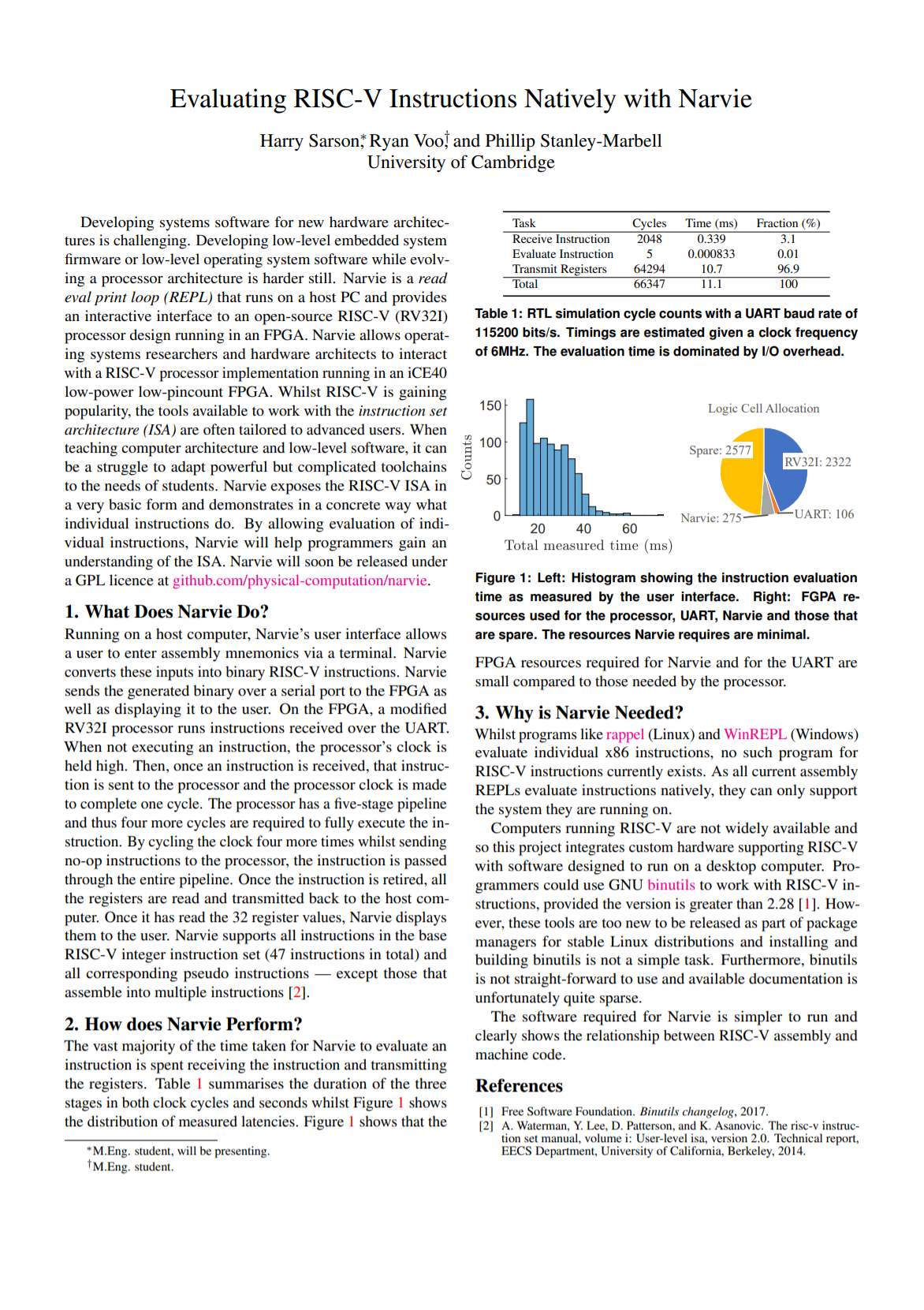Evaluating RISC-V Instructions Natively with Narvie (Poster)

Abstract
Developing systems software for new hardware architectures is challenging. Developing low-level embedded system
firmware or low-level operating system software while evolving a processor architecture is harder still. Narvie is a read
eval print loop (REPL) that runs on a host PC and provides
an interactive interface to an open-source RISC-V (RV32I)
processor design running in an FPGA. Narvie allows operating systems researchers and hardware architects to interact
with a RISC-V processor implementation running in an iCE40
low-power low-pincount FPGA. Whilst RISC-V is gaining
popularity, the tools available to work with the instruction set
architecture (ISA) are often tailored to advanced users. When
teaching computer architecture and low-level software, it can
be a struggle to adapt powerful but complicated toolchains
to the needs of students. Narvie exposes the RISC-V ISA in
a very basic form and demonstrates in a concrete way what
individual instructions do. By allowing evaluation of individual instructions, Narvie will help programmers gain an
understanding of the ISA.
Cite as:
H. Sarson, R. Voo, and P. Stanley-Marbell, "Evaluating RISC-V Instructions Natively with Narvie", EuroSys 2019 (Poster).
BibTeX:
@inproceedings{Brooks2019SafeguardingSD,
title={Evaluating RISC-V Instructions Natively with Narvie},
author={Sarson,Harry and Voo,Ryan and Stanley-Marbell, Phillip},
year={2019},
title = {EuroSys '19: Proceedings of the Fourteenth EuroSys Conference 2019},
year = {2019},
isbn = {9781450362818},
publisher = {Association for Computing Machinery},
address = {New York, NY, USA},
location = {Dresden, Germany}
}
